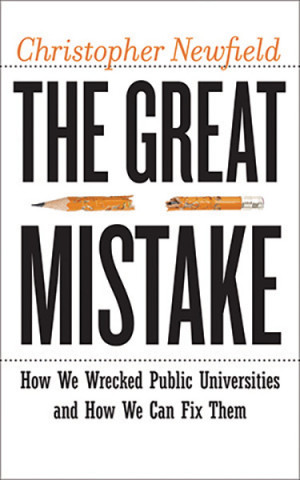I've been writing to my budget pals for a few months about when the toxic waste is going to surface in university endowments. It's only just
beginning - in the form of the shadow of the holes in the crap investments thrown by operating cuts and now hiring freezes. Cornell announced a couple of weeks ago, the Chronicle of Higher Ed is starting to
keep a list, which includes at least partial freezes at other Ivies like Brown and Dartmouth and a full hiring freeze of that greatest of all beneficiaries of the high-tech booms, Stanford University.
The New York Times has a good
overview that begins, "Some of the nation’s universities are trying to sell chunks of their portfolios privately as their endowments swoon with the markets."
The crucial point in the piece is that university "endowments with more than $1 billion in assets reported 35 percent of their holdings" to be in "alternative investments" - i.e. the stuff that has been locking up or blowing up for six months now. This is a much higher proportion than can be found in pension plans, which means that the big endowments can be expected to fall more than say the 15% that the University of California's
pension plan has fallen so far in this calendar year. Should we look for losses at Stanford, Yale, and Duke of 30% in one year?
Hence the logic behind this otherwise surprising announcement, reported in the CHE by Charles
Huckabee, from the richest university on earth:
November 25, 2008
Harvard Freezes Staff Hiring and May Call Off Faculty Searches
In further signs that university endowments — even the wealthiest ones — are taking a hit in the nation’s economic crisis, The Boston Globe reports that Harvard University’s largest faculty division is freezing staff hiring and rethinking faculty searches, and The New York Times reports that Harvard and other institutions are exploring opportunities to sell some of the more volatile chunks of their endowment portfolios.
Michael D. Smith, dean of Harvard’s Faculty of Arts and Sciences, wrote in an e-mail message to department heads on Monday that Harvard’s endowment losses would have “a major and long-lasting impact” and would “require significant reductions in our annual expenses,” according to the Globe.
Harvard’s endowment, which was reported last year to be worth more than $34-billion, pays for more than one-third of the university’s operating budget. Two weeks ago, Harvard’s president, Drew Gilpin Faust, wrote in a letter to the campus that the university anticipated a loss of revenue because of the economic crisis. Neither Ms. Faust’s letter nor Mr. Smith’s message gave specific figures for the endowment’s performance in recent weeks.
According to the Times, Harvard, the University of Virginia, Columbia and Duke Universities, and other institutions that hold “alternative investments” are now trying to sell or considering sales of some of those investments. But finding buyers is proving difficult because such investments — which include hedge funds, private-equity holdings, and real-estate partnerships — are not traded publicly.
Other Ivy League institutions that are taking a hard look at expenses these days include Brown and Cornell Universities, which have also announced hiring freezes, and Dartmouth College, which is contemplating a 10-percent budget cut that it says may require a staff reduction. Dozens of other institutions around the country are taking similar cost-cutting measures.



